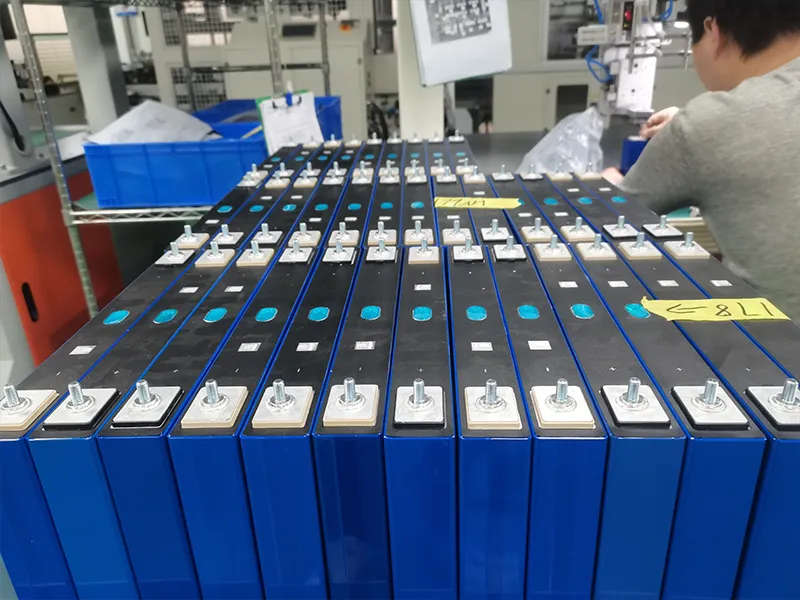Introduction
With the rapid development of electric vehicles and energy storage systems, lithium iron phosphate (LiFePO₄, LFP Battery) batteries have become a mainstream choice due to their high safety, long cycle life, and low cost. Among these advantages, a cycle life exceeding 6,000 charges and discharges is one of the core competitive edges of LFP battery. But how is this ultra-long lifespan achieved? This article will delve into the industrial-grade manufacturing processes of LFP batteries, revealing the key technologies behind their exceptional cycle life.

1. Why Can LFP Battery Achieve 6,000 Cycles?
The long cycle life of LFP batteries primarily stems from their stable crystal structure and optimized material system:
(1) Stability of the Olivine Structure
- Lithium iron phosphate (LiFePO₄) features an olivine crystal structure, which undergoes minimal volume change (only ~6%) during charging and discharging—far less than the 10%-20% seen in ternary materials—reducing structural damage to the electrode.
- This structure remains stable even under high temperatures and overcharging conditions, slowing battery degradation.
(2) Low Side Reactions, High Safety
- The operating voltage (3.2V) of LFP Battery is lower than the decomposition voltage of the electrolyte, minimizing side reactions and preventing excessive growth of the SEI (solid electrolyte interphase) layer, thereby extending lifespan.
- Compared to ternary batteries, LFP batteries are less prone to thermal runaway, making them safer for long-term use.
(3) Nano-Coating and Carbon-Coating Technologies
- Nano-sized LiFePO₄ particles enhance lithium-ion diffusion rates, reducing polarization and improving rate performance.
- Carbon coating boosts electrode conductivity and prevents active material detachment, allowing the battery to maintain high capacity even after thousands of cycles.
2. The Secrets of Industrial-Grade LFP Battery Manufacturing
Achieving a cycle life of over 6,000 requires meticulous material selection, production processes, and battery design. Below are the key manufacturing techniques:
(1) High-Purity Raw Material Selection
- LiFePO₄ Cathode Material: High-purity LiFePO₄ is used, with strict control over Fe²⁺ content to avoid Fe³⁺ impurities that could cause capacity degradation.
- Graphite/Silicon-Carbon Anode: The anode material is optimized to improve lithium-ion intercalation/deintercalation efficiency and minimize lithium plating.
- Electrolyte Optimization: Fluorinated lithium salts (LiPF₆) and film-forming additives are used to create a stable SEI layer and reduce side reactions.
(2) Precision Electrode Manufacturing
- Slurry Mixing: High-shear mixing technology ensures uniform dispersion of active materials, conductive agents (e.g., carbon black), and binders (e.g., PVDF).
- Coating & Calendering:
- Double-sided coating ensures uniform electrode thickness, preventing localized stress concentration.
- High-precision calendering increases electrode density, enhancing cycle stability.
(3) Strict Battery Assembly Techniques
- Stacking/Winding Process: A full-tab design reduces internal resistance and improves rate performance.
- Laser Welding: Ensures strong connections between tabs and current collectors, minimizing contact resistance.
- Vacuum Electrolyte Filling: Precisely controls electrolyte volume to avoid air bubbles that could affect cycle life.
(4) Precision Formation & Aging Control
- Pre-charging (Formation): Small-current charging and discharging help form a stable SEI layer, improving initial efficiency.
- High-Temperature Aging & Screening: Eliminates defective cells, ensuring batch consistency.
3. How to Further Extend Cycle Life?
The industry is exploring the following technologies to push beyond the 6,000-cycle limit:
✅ Single-Crystal LiFePO₄: Reduces grain boundary cracks, enhancing structural stability.
✅ Solid-State Electrolytes: Minimizes liquid electrolyte side reactions, potentially extending lifespan beyond 10,000 cycles.
✅ Smart BMS (Battery Management System): Optimizes charging/discharging strategies to prevent overcharging/over-discharging.
4. Conclusion
The 6,000-cycle lifespan of LFP battery is no accident—it is the result of advanced material science, manufacturing processes, and system optimization. As technology advances, the performance and longevity of LFP batteries will continue to improve, driving the electric vehicle and energy storage industries toward a more efficient and cost-effective future.